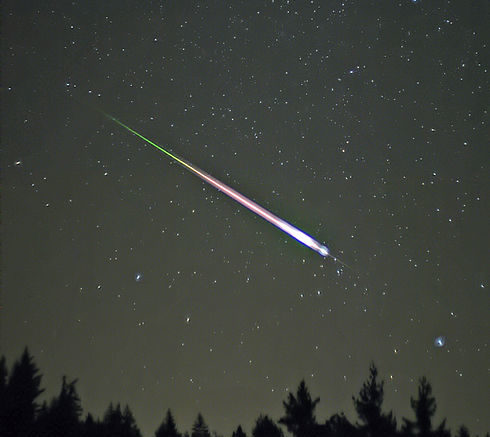The skies have always inspired and affected cultures in many different ways. Whether that be providing inspiration for their art and culture, physical artifacts such as metal, or something else, meteors have played a huge role in human civilization.
People can be superstitious and believe in omens and good luck charms, regardless of the science behind it and how much it makes sense. Examples of this is that people believe that breaking a mirror will bring 7 years of bad luck and that bad cats are a sign of witches or that Friday the 13th are bad days. Looking at what this means for meteors, one can see that in Switzerland, a meteor was considered by the population to possess the power of God. For those in the Baltic countries and other Central European countries, there was the belief that people had a personal star, which would fall upon their death. This led to some starting to say phrases things as ‘rest in peace’ or ‘may God guide you to a good path’ upon seeing a meteor. For those in the Philippines, someone who views a meteorite has to tie a knot in a handkerchief before the light of the meteorite is extinguished.
It is very common for cultures to use astronomical objects for their calendars, arts, and myths, which is consistent with the fact that multiple cultures have mythologies related to meteors. It is thought that the Kaali impacts, which happened around 2,000 BC during the Nordic Bronze Age may have influenced Estonian and Finnish mythology. Other examples of meteorites in mythology include the Campo del Cielo, also around 2000 BC, is said to potentially factor into the legends of some Native American tribes, while the impacts at Henbury, around 2200 BC, has been integrated into Australian Aboriginal oral traditions.
Archeologists and scientists have been curious about how the ancient Egyptians were able to craft iron objects such as blades found in the tombs of the pharaohs and some glass objects for jewelry. It wasn’t until recently that testing was done that this was indeed the case as there might have been no other way to have the same glass and iron be created.
It is known that if a meteor were to not burn up in the atmosphere and impact the ground, it could be cause damage to surrounding buildings and be deadly for those people and animals living in the surrounding areas. One example of this was published by UCSB researchers who found that an early human civilization 10,000 years ago was entirely destroyed by a meteor impact in Northern Syria.
For other Top 5 articles like this, check out the articles we have. Connect with us on our social media such as Twitter and Instagram to stay up to date on new articles, events, and more.

Be the first to comment on "4 ways meteors affected ancient civilization"